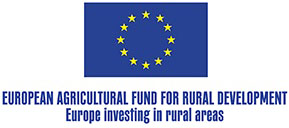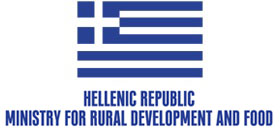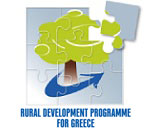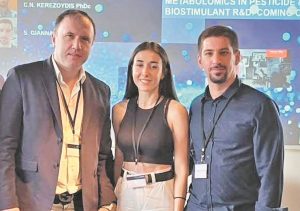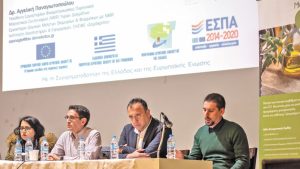Much Better Oil – Protecting Olive Production from Anthracnose

Konstantinos Aliferis, Scientific Lead of the Much Better Oil project, Assistant Professor of Agricultural Pharmacology at the Agricultural University of Athens (AUA)
“Our goal is to strengthen olive cultivation in practice and support Greek producers against anthracnose.”
Interview by Tania Georgiopoulou
The Much Better Oil project, aimed at enhancing both the quality and quantity of olive oil production in Messinia (Southern Greece), has concluded two years of field applications. The project focused on the dangerous olive disease anthracnose and was carried out under Measure 16 “Cooperation” of the 2014–2022 Rural Development Programme, with GAIA EPICHEIREIN as the coordinating body. The region’s major cooperatives, Nileas and Elaionas, were actively involved. Professor Konstantinos Aliferis, the scientific coordinator, discusses the project’s outcomes.
The programme aimed to study the variability of the anthracnose pathogen, so that specific substances could be used each time—substances to which the pathogen is not resistant. Could you share the results now that the two-year implementation has been completed?
We collected infected olives and flowers from the wider region of Messinia to isolate different strains of the Colletotrichum acutatum fungus (which causes anthracnose). We evaluated all approved active substances to determine which were most effective against local strains. This allowed us to select highly effective plant protection products and eliminate ineffective ones, like copper-based compounds. We developed a treatment protocol suitable for both conventional and organic farming, achieving high protection levels in the pilot fields.
How many morphotypes of the pathogen were found? Why does resistance occur?
The total number of isolations resulted in a collection of 35 distinct strains, all belonging to the Colletotrichum acutatum species complex (s.l.)[MM1] . Based on morphological characteristics of the mycelium and spores, these strains were classified into five distinct morphotypes. These morphotypes showed varying levels of sensitivity to approved active substances, and resistant morphotypes were also identified.
Specifically, Morphotype 3, which appeared in 14.5% of the population, exhibited elevated levels of resistance to the active substances kresoxim-methyl, trifloxystrobin, and azoxystrobin, and partial resistance to difenoconazole and pyraclostrobin.
Resistance is a complex phenomenon, the causes of which were not within the scope of this project. Generally, resistant strains pre-exist in any fungal population, typically at low frequencies, or they emerge through genetic recombination or random events (e.g., UV radiation). In cultivation practices, the repeated use of the same active substances over successive years leads to a gradual increase in the proportion of resistant strains (as the sensitive ones are eliminated), which can eventually result in their dominance. At that point, a single active substance—or even a group of substances with the same mode of action—becomes ineffective in controlling the pathogen.
Should producers identify the pathogen before applying the treatment? If so, how can this be done? Are personalised interventions being developed?
The identification of the pathogen, as well as the evaluation of different active substances to determine the most effective ones, is not feasible at the level of individual producers. This process requires specialised personnel and appropriate laboratory equipment.
Within the framework of the project, the creation of a customised crop protection programme was proposed and implemented, based on the data and specific needs of the broader olive-growing region covered by the two cooperatives—an area totalling approximately 700 hectares.
Therefore, the scientifically and practically sound recommendation is to develop similar tailored programmes in key olive-producing areas across the country, with the goal of promoting sustainable olive cultivation on a broader scale.
How was the olive fruit and, consequently, the quality of the olive oil affected, based on your analyses?
The reduction in infection levels is a sufficient condition for improving olive oil quality. Through metabolomic analysis using two advanced analytical platforms (GC/EI/MS and NMR), we were able to identify distinctive characteristics in the oils produced by the two cooperatives.
We found high levels of metabolites that serve as quality indicators for olive oil. Specifically, we identified polyunsaturated fatty acids such as linoleic acid and α-linolenic acid, the monounsaturated oleic acid, as well as the phenolic compound tyrosol, one of the most important antioxidant and neuroprotective substances.
These analyses add value to the olive oil produced by the two cooperatives and potentially increase the income of producers.
Will you continue your research on anthracnose?
Our team has been working on olive anthracnose and its causal pathogen for many years. We have been studying it in our laboratory for nearly a decade, supporting undergraduate, postgraduate, and doctoral theses on the topic.
In parallel, we have presented our findings at national and international scientific conferences, both through oral presentations and posters, and we have published our research into this pathogen in scientific journals.
Therefore, this effort neither began nor ends with this project. Research and experimentation will continue with the goal of providing practical support to olive cultivation and helping Greek producers combat this serious disease.
MUCH BETTER OIL: Reducing Anthracnose and Improving Product Quality
The modern crop protection programme to combat olive anthracnose was applied in the olive groves of members of the Nileas and Elaionas cooperatives. Anastasia Michou (Nileas) and Christos Nikitopoulos (Elaionas) spoke to “YX” about the results of the Much Better Oil project and their collaboration with the Agricultural University of Athens.
Is anthracnose a problem in your area? How does it affect production?
Anastasia Michou: The presence of anthracnose in the area largely depends on the weather conditions during the year. It’s clear that when the disease appears, it significantly impacts production.
Christos Nikitopoulos: Anthracnose first appeared in our region, in Gargalianoi (Messinia), in 2016. That was the first year we had serious problems due to the disease. Our production was severely reduced, and the oil we produced was of very poor quality.
In bad years, did you suffer major losses?
Michou: By promptly applying the necessary treatments, we managed to keep the damage to production at low levels, without serious consequences for the quality of the olives or the oil.
Nikitopoulos: In bad years with serious anthracnose problems, we had to spray frequently. That meant high costs, and often the results were unsatisfactory due to pathogen variability. In some years, our losses reached 50%–60% of total production.
What changed after your collaboration with the university and the application of the recommended treatments?
Michou: The collaboration with the university and the targeted use of the recommended formulations led to a significant reduction in anthracnose infections.
Nikitopoulos: With the scientists’ guidance, we followed customised crop protection plans and carried out preventive spraying with the right products at the right time to achieve the best possible result.
Is it easy to apply the treatments? Should they be applied at specific times?
Michou: Yes, the application is very easy, especially since the university provides very clear instructions. According to these—and based on plant protection product guidelines—applications should be carried out before flowering or at the very early stages of flowering.
Nikitopoulos: We had no trouble following the experts’ guidance, and everything was done properly with their help. Spraying should take place in spring during flowering and again during fruit ripening.
What were the results?
Michou: The treatments had very positive results, significantly reducing the severity of anthracnose infections—even in fields that had major problems in previous years.
Nikitopoulos: I think the results were very encouraging. We managed to control anthracnose to a satisfactory degree—it had become a nightmare for us growers.
Would you say the programme helped reduce your cultivation costs?
Michou: Following the university’s crop protection recommendations for anthracnose didn’t reduce our annual cultivation expenses, but it contributed greatly to improving the quality of the final product.
Nikitopoulos: There was a significant cost reduction because the sprays were applied in a targeted and controlled manner.
[MM1]I assume they know what this stands for. The reader won’t.

